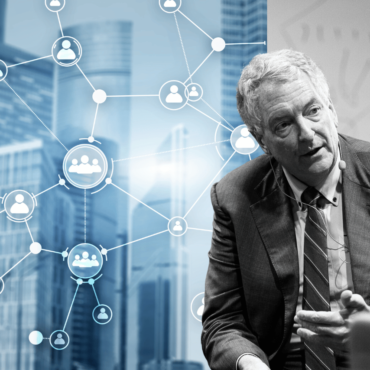

By Heleen Mes, Founder of HXWork & Author of Employee Experience; happy people, better business
Employee experience is an employee’s experience and emotions when interacting with the organization, and the extent to which they meet the employee’s expectations. If the experience is better than expected, employees are ‘happier’ with their employers. And happy employees are more productive, have lower turnover and absenteeism rates, and have more appeal in the job market. Another plus: customers are more likely to choose brands whose profiles feature happy employees (Trendwatching, 2019).
As for the future of employee experience, we have much to learn from developments in customer experience. After all, what employees experience as customers outside the workplace, they expect to experience as employees in their workplace. If for instance they can now declare their medical expenses simply by sending a photo via WhatsApp, they certainly do not expect to have to tediously fill in forms at work.
Is this expectation unfulfilled? If so, dissatisfaction with their employer increases. A key lesson from customer experience: never promise more than you can actually deliver. Customers will make you pay dearly for this oversight, and the same applies to employees: if promises made during the interview stage are not kept, quicker offboarding are more likely to follow.
In employee experience research conducted by KennedyFitch (2018), 95% of (HR) respondents stated that employee experience was a priority for them. More than half of the respondents believed they were still in the research/start-up phase, while 8% of respondents felt they were doing a good job connecting customer experience and employee experience.
If developments in customer experience are thus a precursor to the employee experience, what should employers focus on? A summary of 10 future developments in workplace experience:
1. Fast & convenient
In terms of experiences, providing convenience for employees is the fastest-growing concern: can you save your colleagues time, can you simplify their processes and thus reduce irritation and the likelihood of mistakes occurring, can your employees expend less effort to get things done, and can they work where they want and thus save on travel time. Digitization is a major driver here. Unfortunately, employees quickly grow accustomed to ‘faster and easier’, so their appreciation and happiness will likely be short-lived.
2. Be kind
‘Be kind’can also be an issue for organizations. Employees in many organizations rank lack of appreciation and attention high on their list of frustrations. Organizations that want to show their employees how important they are to them must pay close attention to their employees, and to the tone they use when communicating with them, which should be warmer, more cordial, and grateful. An example of a kind seasonal gesture: management gives employees handwritten Christmas cards expressing their gratitude. Or meetings could start with a group hug, or compliment boards can be set up where employees can post compliments for their colleagues.
Nudging is the term for a ‘gentle push in the right direction’, or making the best choices for employees more attractive. This isn’t achieved through commands, however, but rather by enticing the desired behavior. Would you like to encourage your employees to use the stairs more often? Instead of launching a concerted communication campaign, simply make the stairwell a more attractive and compelling place, using decorations and music, and signs extolling the many health benefits of taking the stairs.
3. Wow & Fun
Use minor events as opportunities to create spectacles, and go over the top. Wow! The employee didn’t see that coming! Don’t wait for a 25-year work anniversary to put someone in the limelight, you can also do it unexpectedly after three years. Have fun at expected and unexpected moments, and add game elements to work: fun makes it run.
4. Makeovers
The eyes also want something nice. In an age when even toilets must be Instagram-worthy, workplaces must keep pace. Office buildings of the ‘thirteen-a-dozen’ variety are undergoing makeovers, replete with new coats of paint in eye-catching colors and alluring designer furniture and artwork.
5. Virtual reality
Virtual reality (VR) and augmented reality (AR) have become such integral parts of people’s lives that they also want to see them incorporated into their work. This offers exciting possibilities for the workplace, ranging from job applicants getting to know their future employer in VR, touring their future workplace wearing VR glasses, to trainees conducting assessments via AR. Simulate training situations. Invite speakers from around the world to appear via VR.
6. Emotional growth & wellness
Employees want to see the growing popularity of yoga, veganism, and mindfulness lifestyles reflected in their workplace. Focus on your employees’ vitality, from vitality apps, power naps, and sleep training, to planking next to your desk. Biometrics will also emerge in the future; for example, employees will soon be able to check their heart rates, calorie intakes, and glucose levels in the morning and then order an appropriately nutritious lunch from a customized menu.
7. Personalisation
Using AI and real-time data allows you to offer employees information that aligns with their personal needs, like, for example, employment conditions that you had not previously offered, but which would benefit a certain employee given their specific personnel information or biometrics. Or, an analysis of an employee’s language use in emails could be a reason to digitally offer them another internal position, one better suited to their personal development.
Consumerization differs from personalization, but also matters, as it allows employees to personally choose from a range of employment conditions, for example, or decide how to spend a personal budget.
8. Community & Inclusivity
People have a fundamental need to feel they belong somewhere, and this feeling needs reinforcing, especially given the rise of the gig economy and flex working. Organizations are now expected to provide a sense of community, that village and fanfare feeling of the past, of which inclusivity is a part: promote diversity by engaging with target groups that need extra care and guidance, with prospective employees who are disabled and with new groups on the job market.
9. Purpose & social impact
‘Purpose thinking’ is on the rise: why do you do what you do? How are you contributing to a better world? Organizations must increasingly support their employees’ pursuits of a greater sense of purpose and self-knowledge. Employers in turn highlight their organizational purpose by offering their employees experiences: for example, hotel employees are trained to recognize human trafficking. Engaging in volunteer work during working hours will also become increasingly prevalent.
10. Experience as a condition of employment
Offering experiences will become an employment condition. For example, Guidion – an installer of household appliances – annually gives its employees a ‘happy day’, with the only condition for getting the extra day off being that they must do something that makes them happy, and then send photos to their colleagues as proof. Elsewhere, employees at Lelo, a Swedish sex toys brand, get four extra days off for “self-love”.
Whatever it is that you focus on as an organization, ensure that the experiences align with what you stand for as an organization and employer: the purpose, vision, core values, and Employee Experience statement. Study what makes your employees happy, because, for example, they struggle and need certain things to be the best versions of themselves: start with ‘need to have’ instead of ‘nice to have’. And when developing experiences, use ideas that come from the employees themselves, so that the experiences seamlessly align with their own lives.
….
Heleen Mes is an Employee Experience expert and founder of HXWork based in the Netherlands. Oracle named her as a top HR influencer in their 2018 annual report. Author of Employee Experience; happy people, better business. Her mission is to make every employer a top employer. She has over 25 years of experience in HR and she reached a top-10 position as ‘Best Employer’ with her companies twice. She is the founder of the LinkedIn group Employee Experience Nederland/België and editor of the news site Happy People Better Business News (www.hpbbnews.com).

Written by: Katalin Toth
Employee Experience Future of Work HR Strategy
Previous post

- 1852
labelArticles today2023.02.23.
Preventing HR-mistakes with employee experience design
By Heleen Mes, Founder of HXWork & Author of Employee Experience; happy people, better business WHY SHOULD YOU CARE? Employee experience design has become increasingly important as organizations recognize the [...]
Similar posts

labelArticles today2024.07.24.
AI-Powered HR: Strategic Benefits and Practical Applications

labelArticles today2024.06.24.









Post comments (0)